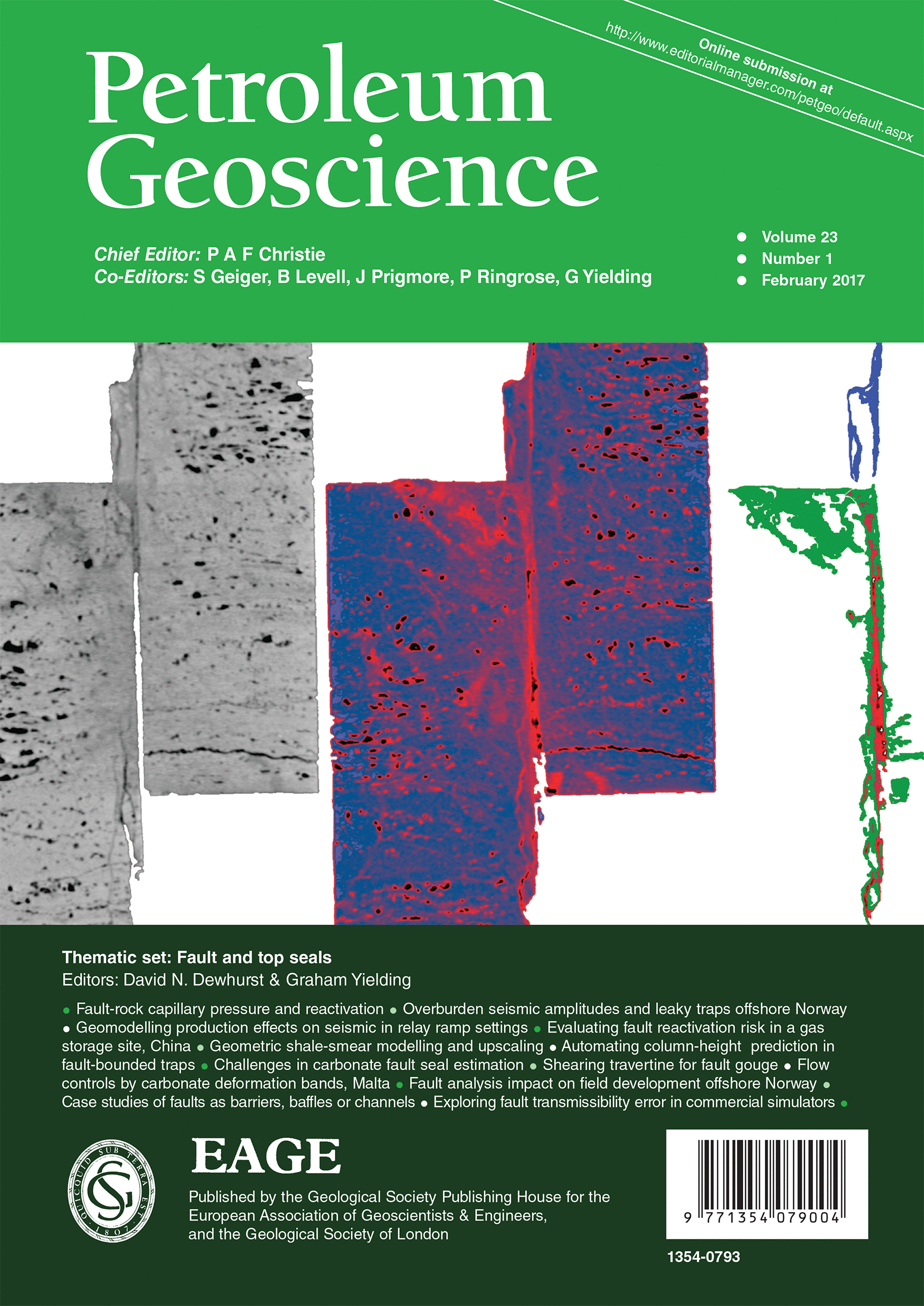
Full text loading...
This paper presents case studies of producing fields where faults heavily influence fluid-flow behaviour. In a first case, faults show no evidence of barrier behaviour prior to production but, nevertheless, demonstrate strongly compartmentalized field behaviour once production starts. Analytical modelling suggests that short-term pressure differences between faulted panels can be predictable owing to the permeability contrast between fault zone and reservoir: fault permeability, however, is not low enough to prevent dissipation on the geological timescale. Faults in a second case acted as baffles during production, supporting significant pressure differences, with salinity data suggesting that, as a network, they channelled sweep through relays and around fault tips. The third case examines a fault acting as a vertical drain, causing early water breakthrough through proven intermediate seals and depleting non-produced aquifers above. The fault permeability required to explain these depletion rates is estimated from an analytical model. Estimates of 0.02 – 0.2 mD compare well with predictions from a new algorithm calibrated using measurements on natural fault rocks from seismic-scale faults. Experience from case studies such as these can improve the way in which we use limited data from exploration wells when considering fault behaviour in development scenarios and in conditioning reservoir models for production forecasting.

Article metrics loading...

Full text loading...
References


Data & Media loading...

